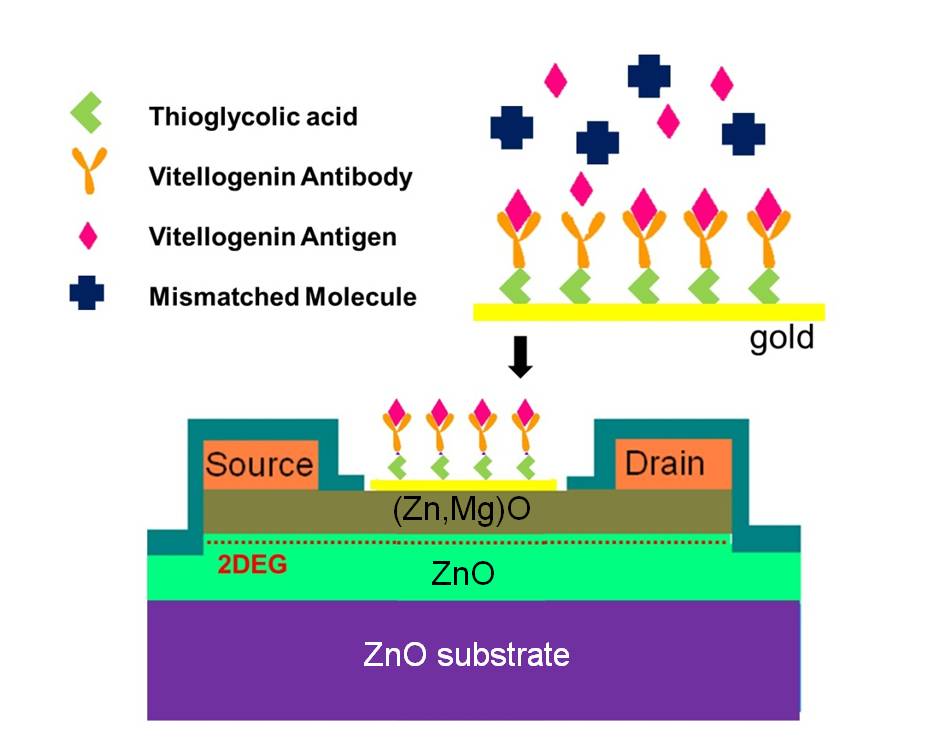Bio compatible sensors
During the last 10 years, sensor field has attracted a large attention. The main reason is the multitude of potential applications in chemical industry, medical diagnostics, food industry, daily life, etc. ZnO is considered as one of the best solution for both reductive and oxidative gas sensors. ZnO nanostructures have already proved their large potential for detecting methanol, ethanol, acetone, butane, and chlorobenzene gases. On the other hand, due to its biocompatibility and high isoelectric point, ZnO is very promising for the biological detection of urea, DNA sequence, cholesterol, glucose,…
Combining the biocompatible property of ZnO and the possibility to form a bidimensional electron gas (2DEG) at the ZnO/(Zn,Mg)O interface, very performant biocompatible sensors are expected. Based on the high electron mobility transistor structure, the equilibrium between the 2DEG and the surface donor states is used to fabricate very sensitive sensors. This approach has 3 main advantages: high sensitivity, very efficient conversion of the detected species in electrical signal, and the possibility to integrate an amplification stage to reduce noise level.



